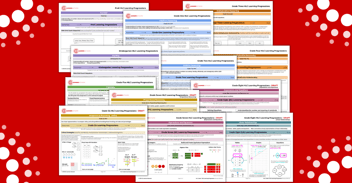
Math Learning in the time of COVID
As we enter 2022 we hope the new year brings health and reduced stress in schools, for staff and students alike. As we embark on year 3 of a pandemic, we continue to face challenges - staffing issues, absences due to sickness and quarantine, and interruptions to routines and learning. Teachers, and students, are amazingly flexible and resilient in the face of this all. There are lessons we have learned through this, that will be useful even after the pandemic ends, and things that we know to have been essential to learning prior to this that will serve us, and our students well, in our current reality. Dr. John Tapper shares some thoughts on this time we are in and offers some suggestions and considerations for teaching.
Math Learning in the Time of COVID
A lot is being said and written right now about the current and looming crisis in education as a result of the pandemic. Attendance by both students and teachers is so inconsistent that schools are forced to close for days at a time. When learning does take place, it’s fragmented and frequently disrupted by the behaviors of children who are unused to working together. Teachers are leaving the profession. Morale throughout the system is low.
Despite all this trauma (I’m only pushing this word a little), schools will be a fixture in our lives for the foreseeable future. Here are some important ideas the All Learners Network would like to share about math instruction with teachers and schools for surviving the current mayhem.
1. Focus on the important math concepts.
No, we’re not talking about “power standards” or trying to find a couple of interesting activities from each program unit. There are a few key concepts that get children to algebra and beyond in each grade level. We can argue about whether or not algebra should be the goal for math learning, but a significant body of research suggests that students who understand algebra are more likely to graduate from high school and go to college. If you want to see an example of this kind of focus important math concepts, check out the All Learners High Leverage Concepts.
I want to be sure that teachers who read this get this message clearly: It’s OK to focus on what’s most important. Getting through half your math program won’t get you there. Working through the already busted math curriculum calendar won’t get you there. Focus on what’s going to make students successful in the next grade level. Again, All Learners has some guidance on focusing on key concepts, if you need/want it.
2. Differentiate, differentiate, differentiate
I’ve spent a lot of time in math classrooms over the last 40 years. In an ordinary year, students are all over the map. This year… things are a bit more chaotic. We cannot meet everyone’s needs with only whole class instruction. (I don’t think we ever could, but current circumstances are driving this home) We need to have some way to address individual needs, gaps, challenges.
There are a variety of ways to do this. For obvious reasons, I’m a fan of the ALN Math Menu approach, but there are many scholars/writers who offer some version of math workshop. The goal is that children are engaged at an individual level with “just right” math. This must also be a time when students can work independently so the teacher can focus on instruction for small groups/individuals.
3. New teachers, special educators, math interventionists need professional development
The wave of new teachers coming in 2022 will be the biggest in living memory. Even the best colleges cannot prepare them for what they will face in their first year. (I speak from experience) They need significant induction support – not just someone assigned to keep an eye on them. In our work around the country, we also find that the educators who serve students with math challenges have been poorly prepared for the job they’re asked to do. Math content/strategy learning should be a priority for professional development for all special education teachers who teach math and for all math interventionists.
While the current crisis is hurting students in predictably proportionate ways (poor children and children with learning challenges are disproportionately affected) this is also a time of opportunity. Perhaps we can finally move from making the U.S. math curriculum, “a mile wide and an inch deep.” For support, please reach out to AllLearnersNetwork.com




